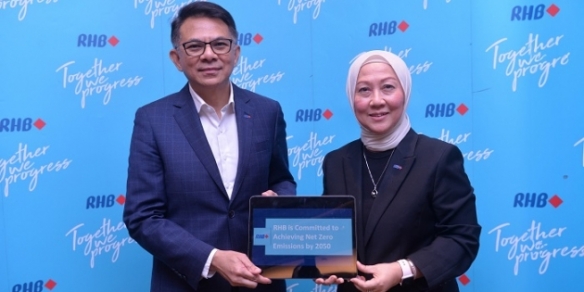For its next number, FashionValet gets physical
By Karamjit Singh July 30, 2015
- Concerns over maxing out low-hanging customers online leads to physical store
- Both high-touch and high-tech channels need to deliver to hit US$26m revenue

IF there is one thing e-commerce startups can learn from FashionValet founder and chief executive officer Fadzarudin Anuar is to never say never – in this case, to a physical store.
Speaking to Digital News Asia (DNA) recently, Fadzarudin said that in the beginning, he was adamant about “never setting up a physical store.”
Besides wanting to stay true to his retail model, the limitations of a physical model also played a big part.
“I know it’s really tough running a retail outlet and there is a predictable limit to how much a store can make, versus the higher upside to an online store,” he said.
But today, Fadzarudin is more excited to talk about omnichannels than the latest digital marketing tweak that worked, about the fitting room and in-store ambience rather than the UX (user experience) because – you guessed it – FashionValet has gone physical.
READ ALSO: M-commerce: Singapore behind the SEA curve in shopping
It started out more as an experiment during the recent Hari Raya festive season and fasting month, an experiment driven by necessity.
“We had procured some dresses from an Indonesian designer that cost from RM500 to RM1,500 (US$130 to US$393) and knew these would be a tough sell on our site, where the average item costs about RM160 (US$42).
“So we thought a physical store would make sense,” he said.
At the same time, there was a push factor as well. While Fadzarudin claims that FashionValet has enjoyed two times’ sales growth in each of the past two years, with revenue last year between RM5 million and RM9 million and expecting to surpass the RM10-million revenue mark by the end of August, he had been uneasy for some time. [RM1 = US$0.26]
“I just started to get this feeling that growth was going to slow as we had already, in a way, captured the low-hanging fruit of those who appreciate and enjoy online shopping,” he said.
“And I say this even though we are about to blow past our revenue projections for this year,” he declared.
There were two choices: Either accept this was going to happen, which meant slower revenue growth; or do something about it.
Which is why the idea of experimenting with a physical store became appealing. Which is why last month, FashionValet they took a 900 sq ft retail space in an upscale neighbourhood mall in a suburb called Bangsar in Kuala Lumpur.
This has only served to open his eyes to the synergy that a physical store offers online retailers, according to Fadzarudin – so much so that FashionValet has now taken a 2,500 sq ft space in the same store and plans to open similar stores in Singapore and Jakarta.
“A physical store immediately helps you with branding for the small brands that you carry, and your own brand as an online fashion retailer,” said Fadzarudin.
The trust issue is also quickly alleviated, he added. Surprisingly, it also helped with building customer profiles.
He said that the most valuable information for online retailers are customer profiles. “Online shopping then becomes so much easier for the customer.
“So what we did in the store was to have shoppers fill out information about their fashion preferences, down to body measurements,” he added.
While FashionValet’s temporary store experience confirmed how tough retail life could be in terms of the working hours and conditions and sales limitation, online sales saw a bump.
“People were coming in to try the clothes and then going online to try to look for the best deals or to find something similar – and then mostly coming back to our site to buy what they had tried on,” he said.
Then there were those who saw something they liked online, came to the store to try the clothes, and went back to buy them online. The incentives offered also persuaded shoppers to make their ultimate purchase online.
Another reason the store has resonated with customers, according to Fadzarudin, “is because the brands we carry are local and not well-known, so people want to come and try them out to gauge the quality as well as the look.”
This is why the key KPI (key performance indicator) for the physical store will not be sales but on how many people try on the products.
 FashionValet will also be much better prepared when the new store opens. Customer data gathering was all done by paper in the temporary store, said Fadzarudin (pic).
FashionValet will also be much better prepared when the new store opens. Customer data gathering was all done by paper in the temporary store, said Fadzarudin (pic).
“We were so unprepared for the experience, also because we were only given one week’s notice to get the store ready,” he said, however promising that the anchor store will offer a much tighter integration between FashionValet’s online and physical stores.
“Based on our recent one-month experience, I expect this permanent store to give our online store a huge ripple effect,” he declared, while adding that he was also confident that the physical store itself will do well.
With a target of RM100 million (US$26.3 million) in revenue in three years, both his high-touch and high-tech stores will need to deliver big time if he is to hit that number.
Local versus international revenue breakdown currently stands at 65:35. Last year it was 75:25, with Fadzarudin putting the higher international business down to the weakening Malaysian currency.
Related Stories:
FashionValet the wiser second time around
Tech Vision: The emerging world of bricks and clicks
Inverted Edge and Qlik Technologies create new digital shopping experience
E-commerce will be ‘do or die’ for brick-and-mortar retailers: Criteo
For more technology news and the latest updates, follow us on Twitter, LinkedIn or Like us on Facebook.


